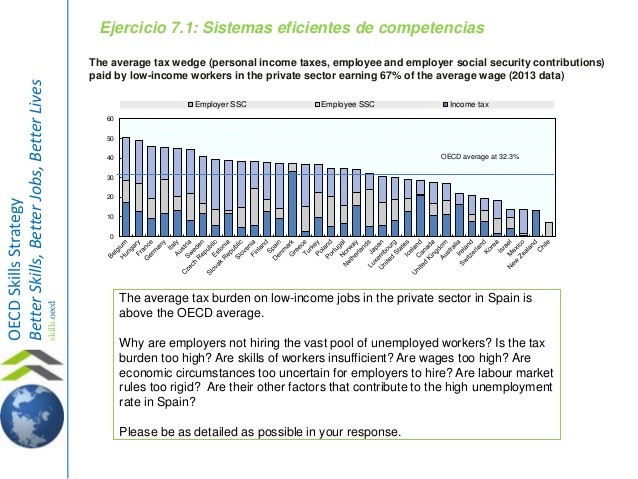Developing an Effective Income Tax Strategy
Post on: 29 Май, 2015 No Comment

Taking steps now can help keep your future tax liabilities as low as possible. Most income tax planning centers on a few basic concepts:
- Delaying taxation where practical
- Taking advantage of tax-favored treatments on some types of income
- Taking maximum advantage of the marginal rate structure of the tax code
- Getting the most from your itemized deductions
- Being aware of potential pitfalls
Why delay taxation?
The answer is simple the time value of money and tax-deferred compounding. If you can control when you take an item of income, delaying the recognition until after year-end will delay paying the tax until April 15th of the following year.
The most common instance where this applies is deciding to take a capital gain on a stock in December or January. Delaying until January can let you earn interest on the amount you will pay in tax for an additional 11 or 12 months. IRAs and qualified retirement plans are other tools that let you defer taxation and earn extra money on what you would have otherwise paid in taxes until you withdraw the funds.
Tax-favored treatment
Wages, interest, and most other types of income are taxed at normal rates. However, the tax law has special provisions for long-term capital gains, most dividends, and interest on bonds issued by state and local municipalities.
For stocks for more than one year, the maximum tax rate on the gain is 15% compared with the normal top rate of 35%. Stocks have other risks, and you should not let the hope of saving some taxes unduly influence any decisions to sell stocks. Be sure to review your portfolio carefully, especially at year-end, to understand how your positions stand relative to the one-year holding period. Net capital losses for a year can only be used up to $3,000. Net losses in excess of $3,000 can be carried forward to offset gains in future years.

The 2003 Tax Act also provides that qualifying dividends be subject to a top tax rate of 15%. For those with a significant equity investment portfolio, this can result in considerable tax savings.
Interest on bonds issued by municipalities and states are generally exempt from federal income tax. These bonds usually pay lower interest rates than comparable taxable bonds. To determine if tax-free bonds make sense for you, compare the after-tax returns of the two types. The higher your income (and marginal tax bracket), the more likely you may find tax-free bonds to be to your advantage.
Marginal income tax rate structure
Our income tax laws are built around a marginal rate structure. This means that income at lower levels is taxed at lower rates and income at higher levels is taxed more heavily. The current rates start at 10% and rise to 35%.
If your income varies greatly from year to year, consider steps that even it out so you get the maximum benefit of the lower rates each year. Individuals that control portions of their income like bonuses and commissions are the ones most likely to be able to apply this.
The other way to deal with marginal rates is to take full advantage of lower rates for each member of your family. It used to be common for parents to give money to children so that the earnings would be taxed at the childs lower rates. However, the rules were changed, and now this is most practical after the child has turned 18. Children under age 18 get a small exemption but have most of their unearned income (dividends, interest, and other investment income) taxed at their parents highest rates.
Tax deductions
You are able to reduce your taxable income for certain types of expenses. These itemized deductions are mostly for state and local taxes (income and property), mortgage interest, charitable contributions, and certain expenses if they exceed a percentage of your adjusted gross income. Medical expenses can also be deductible if they are large relative to your income. If your itemized deductions are not large, the tax tables have a standard deduction built into them.
To get the most benefit for your deductions, consider the timing of when you pay them. For example, you may want to make your last quarterly estimated state income tax payment in December rather than January (if your state has a January due date) or carefully choose when you make charitable contributions.
Avoiding the pitfalls
The income tax laws can be very complex. If your income is high or you have a complicated tax situation, getting professional help may save you money and reduce the stress and anxiety of dealing with your taxes. Another factor for some is the alternative minimum tax (AMT). This additional tax was instituted many years ago to make sure that high-income individuals did not take unfair advantage of the tax laws to avoid or reduce their taxes. However, as incomes have risen and especially with the lower rates from the 2001 Tax Act and the 2003 Tax Act, many individuals are being surprised by the AMT. If your income is high, you have relatively large amounts of itemized deductions (state income or property taxes), or you have stock options, you should probably consult with a qualified tax advisor to at least understand how the AMT may apply to you.
Final words
No one likes to pay more tax than is absolutely necessary, and there are completely legal ways to manage your taxes to some extent. However, cheating on your taxes or letting the idea of saving taxes cause you to make unwise financial decisions, they should not be parts of your strategy.














